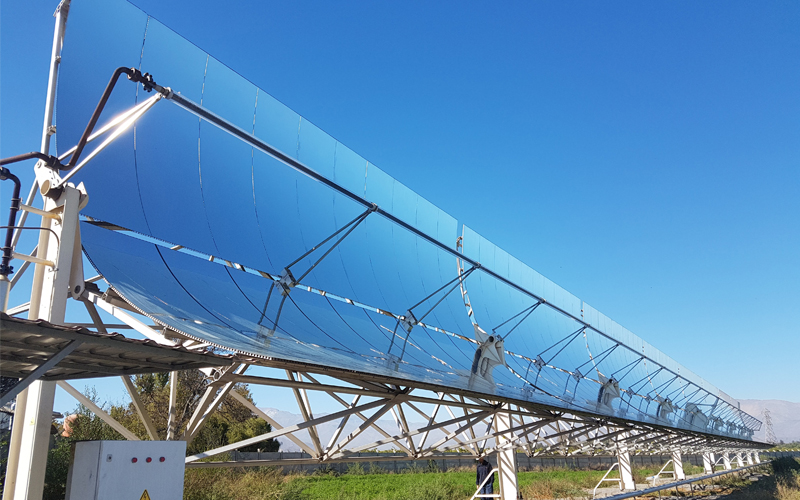Solar Heat: The brilliant promise to generate clean energy in Chile
On Energy Day we celebrate how solar energy has taken on an important role in our country. Fraunhofer Chile – CSET (Centre for Solar Energy Technologies) is supporting Chilean companies that want to incorporate this clean energy into their processes.
In addition to the well-known photovoltaic energy, worldwide and in Chile are increasing technologies and applications of solar thermal energy, which has the advantage of delivering clean energy even when it is cloudy or the sun has already set.
This energy works by heating a heat transfer fluid that after passing through a heat exchanger can be used as a source in a thermal process, or to produce electricity by moving a conventional turbine.
Researchers at the Fraunhofer Chile – CSET are accelerating the integration of this type of energy into Chilean industry because it has the advantage of reducing costs, improving competitiveness and providing the "green" added value that foreign industries are demanding.
"Several Chilean industries are understanding the change and are approaching us so that we can see together the best integration of clean technologies," says Maria Teresa Cerda, researcher in solar thermal energy at Fraunhofer Chile – CSET.
One example is Cervecería Guayacán, in the Elqui Valley, where experts from Fraunhofer Chile are studying how to integrate as much solar energy as possible into the artisanal beer production process.
"The company sees it as a competitive advantage to position itself with a different product just for the way it is made and to strengthen the place where they are", adds Cerda.
Industrial and military applications
Solar thermal energy can generate temperatures ranging from residential applications (water heating), industrial applications (150°C - 550°C), to experimental and military applications (1000°C - 3000°C). In mining, this type of energy has enormous potential in smelting and other processes.
These temperatures, adds Cerda, "are achieved by concentrating the sun's energy through mirrors that reflect direct light on the heat-bearing fluid, which can be water, oil, salts and others. This fluid can be stored during the day in tanks, and then release its energy at night and continue to generate heat or electricity.
Existing commercial technologies include solar collectors, parabolic cylinders, fresnel and tower (such as Cerro Dominador). In Chile there are three of these four technologies.
This type of solar energy should become common in Chile, considering Corfo's goal of "developing, adopting and transferring, by 2030, more sustainable and low-emission technologies for the electro-mobility and green growth industry, including, among others, zero-emission fuels for mining, solar electricity as the main energy input at some mining sites, and innovations in processes and use of solar heat
Faced with these new challenges, the director of the Fraunhofer Chile – CSET Thermal Solar Energy Group, Mercedes Ibarra, stresses that "the Chilean industry is understanding the importance of integrating clean technologies such as solar energy into its processes. Fraunhofer Chile's goal is to work together to accelerate this much-needed change.
Photo caption:
Photo 1: Solar thermal energy project "Jucosol" for juice plant in San Felipe
Photo 2: Fraunhofer Solar Resource Measuring Instrument
Photo 3: Mercedes Ibarra, Director of the Solar Thermal Energy Group of CSET-FCR
 Fraunhofer Chile Research
Fraunhofer Chile Research

